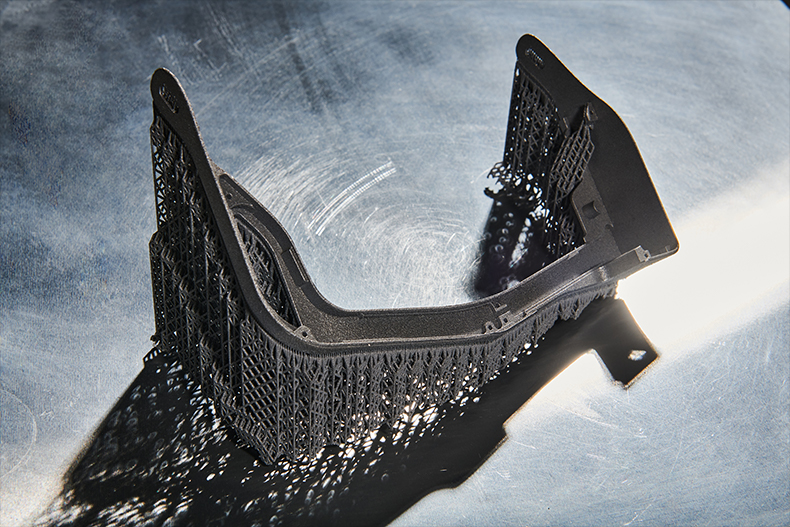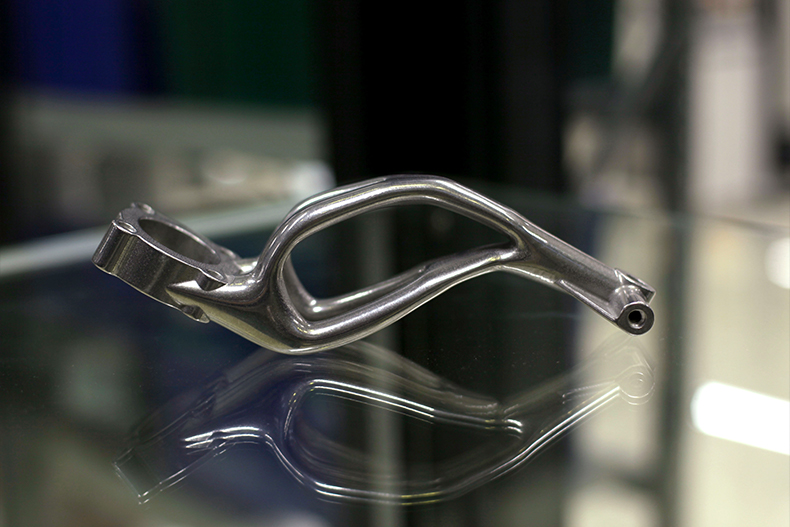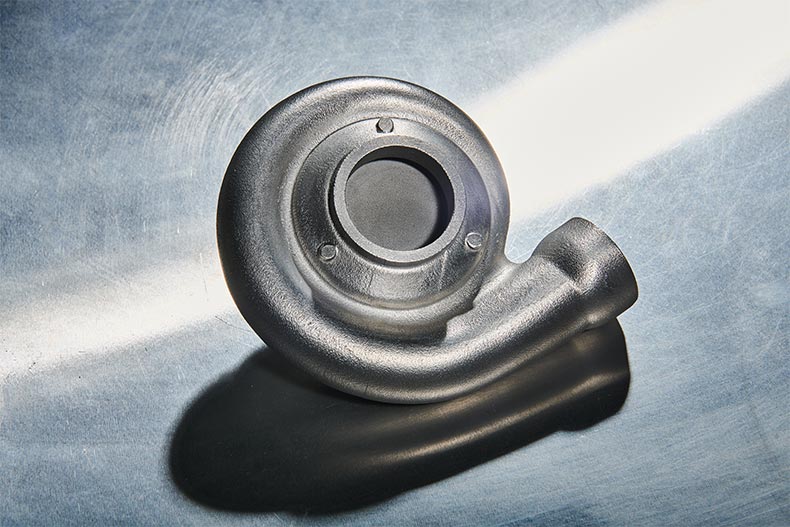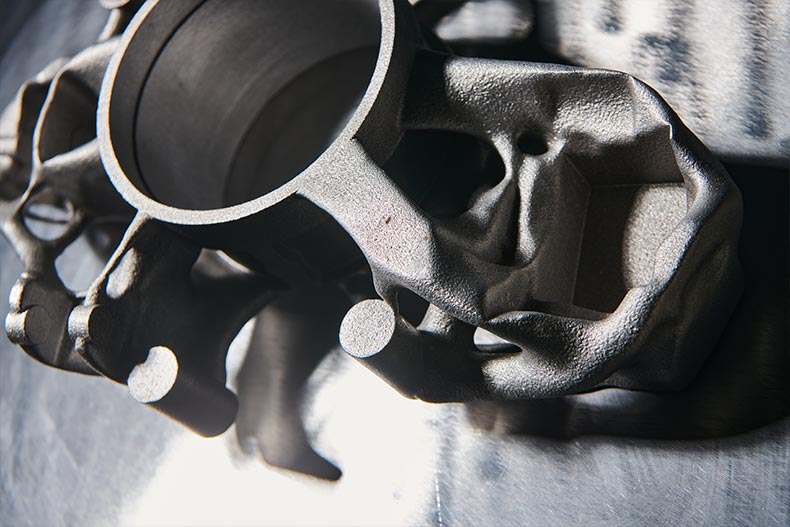It is a usual thing for us to see metal parts in engines or lathes, but in this case, our engineers have developed a rather unusual item – the body of augmented reality glasses. Since this product is the basis, (where all the components are attached and held on it) the product must be durable. And since VR glasses are put on a person’s head, they should not be heavy.
Material: Aluminum alloy
Dimensions: 200х150х50
Production time: 3 objects in 20 hours
TASK
Make a case for VR glasses as quickly as possible in the amount of 4 pieces
PRODUCTION
This is a “direct printing” case, when the 3D model did not undergo major changes and redesigns, they simply printed the finished product on it. However, the preparation took into account all the technological features that are important in additive production. The angles of overhang are calculated, a smooth change in the area of the layer is determined, the absence of “islands” is checked, when the product can begin to grow from several places at once.
In this case, the product was grown again with a minimum amount of post-processing in the future. After printing was completed, it was only necessary to remove the supporting structures and clean the part of metal powder. The lattice structure of the supports helped to reduce the construction time of the product, quickly remove the remains of the IPC and speed up mechanical processing
All 4 units of cases in a 3D printer grew simultaneously in one launch. For this, 3D Nesting software was used to organize the volumetric filling of the platform. The products were located one above the other and did not intersect spatially.
RESULTS
All 4 wearable electronics cases for virtual reality glasses were printed in 20 hours. As a result, the full production period was reduced from 10 to 2 days. Thanks to additive technologies, the material utilization rate was increased. The dimensions of one product were 200x150x50 mm.
WEARABLE ELECTRONICS CASE FOR VR-GLASSES
Material: Aluminum alloy
Dimensions: 200х150х50
Production time: 3 objects in 20 hours
It is a usual thing for us to see metal parts in engines or lathes, but in this case, our engineers have developed a rather unusual item – the body of augmented reality glasses. Since this product is the basis, (where all the components are attached and held on it) the product must be durable. And since VR glasses are put on a person’s head, they should not be heavy.
TASK
Make a case for VR glasses as quickly as possible in the amount of 4 pieces.
PRODUCTION
Preparation of the product for additive manufacturing
This is a “direct printing” case, when the 3D model did not undergo major changes and redesigns, they simply printed the finished product on it. However, the preparation took into account all the technological features that are important in additive production. The angles of overhang are calculated, a smooth change in the area of the layer is determined, the absence of “islands” is checked, when the product can begin to grow from several places at once.
Printing process
In this case, the product was grown again with a minimum amount of post-processing in the future. After printing was completed, it was only necessary to remove the supporting structures and clean the part of metal powder. The lattice structure of the supports helped to reduce the construction time of the product, quickly remove the remains of the IPC and speed up mechanical processing.
Case features
All 4 units of cases in a 3D printer grew simultaneously in one launch. For this, 3D Nesting software was used to organize the volumetric filling of the platform. The products were located one above the other and did not intersect spatially.

RESULTS
All 4 wearable electronics cases for virtual reality glasses were printed in 20 hours. As a result, the full production period was reduced from 10 to 2 days. Thanks to additive technologies, the material utilization rate was increased. The dimensions of one product were 200x150x50 mm.









